GovernmentalUnits
From coraldigest
Key Governmental Units/Departments Involved with Coral Reefs
There are numerous governmental units and departments working to protect and manage coral reefs, both within the United States and internationally. Each governmental unit's role, mission, and accomplishments are outlined below.
US Governmental Units Working With Coral Reefs
US Coral Reef Task Force (USCRTF)

- Mission: The task force aims to lead US efforts to preserve and protect coral reef ecosystems
- Role: The United States Coral Reef Task Force was established in 1998 by Presidential Executive Order 13089: Coral Reef Protection. The order was issued to enhance the role of federal agencies in the preservation and restoration of coral reef ecosystems. [1] The order established a policy framework to guide federal action on coral reefs. It mandates that federal agencies utilize their power to protect and enhance the conditions of US coral reef ecosystems. Additionally, it mandates that these agencies ensure that any actions they authorize, fund or carry out will not degrade coral reef ecosystem conditions. The task force is co-chaired by the Dept of Interior and Dept of Commerce through NOAA (National Oceanic and Atmospheric Administration)
- Members: The task force includes leaders of 12 federal agencies: the Department of Commerce, Department of the Interior, the National Oceanic and Atmospheric Administration, the US Agency for International Development, the US Department of Agriculture, the Department of Defense, the Department of Homeland Security, the Coast Guard, the Department of Justice, the Department of State, the Department of Transportation, the Environmental Protection Agency, the National Aeronautic and Space Administration, and the National Science Foundation. The task force also includes 7 US states, territories, and commonwealths: the governors of American Samoa, the Northern Marina Islands, Florida, Guam, Hawaii, Puerto Rico, and the US Virgin Islands. Additionally, 3 freely associated states are involved: the Federated States of Micronesia, the Republic of the Marshall Islands, and the Republic of Paulu. [1]
- Accomplishments: [1]
- Has helped initiate partnerships, strategies, and support for on-the-ground action to conserve coral reefs
- Adopted the National Action Plan to Conserve Coral Reefs: national blueprint for US domestic and international action to address the growing coral reef crisis
- 2002: Developed the US Coral Reef National Action Strategy to further implement Plan as called for in Coral Reef Conservation Act of 2000
- Holds biannual meetings to discuss conservation, protection, and restoration of coral reefs
- Creation of Steering Committee: one lead point of contact from each USCRTF member agency, state and territory, and chairs of working groups. The committee is co chaired by representatives of the Departments of Commerce and the Interior
- The task force also coordinates smaller, issue specific working groups that include activities such as mapping and information, coastal uses, air and water quality, ecosystem science and conservation, and international efforts
- Implemented the National Coral Reef Action Strategy Report to Congress
National Oceanic and Atmospheric Administration's (NOAA) Coral Reef Conservation Program (CRCP)

- Mission: NOAA itself is a national, science based organization that supports effective management and sound science to protect, sustain, restore coral reef ecosystems. Particular emphasis is placed on increasing understanding of coral reef ecosystems, reducing threats, and increasing management effectiveness at local, state, territory, regional, national, and international levels. [2]
- Role: The Coral Reef Conservation Program was established in 2000 to help fulfill NOAA’s responsibilities from mandates to restore Coral Reef Conservation Act, 13089 and others [2]
- Accomplishments: [2]
- The CRCP it has overseen program planning, execution, and evaluation including management of annual appropriations which amount to about $27 million
- Published the National Coral Reef Strategy along with the USCRTF
- Creation of the CRCP Roadmap which outlines activities and objectives for the program through 2015
- Mangnuson-Stevens Fishery Conservation and Management Reauthorization Act of 2006 that guides decisions on annual catch limits and accountability to end overfishing
- Reauthorization and amendment of the Coral Reef Conservation Act in 2008 to include new partnerships with agencies, governments, and other organizations as well as program expansion and emergency response, liability, and enforcement clauses
- Three congressionally-directed Coral Reef Research Institutes that are administered and managed by NOAA's center for Sponsored Coastal Ocean Research (CSCOR)
- Coral Reef Watch that utilizes remote sensing and tools for monitoring, modeling, and reporting of physical environmental conditions of coral reef ecosystems
- Coral Reef Information system (CoRIS) that allows public access to scientific data on coral reef ecosystems and new information products
- Sponsors coral publications, products, and documents: namely "The State of the Reef Ecosystems of the United States and Pacific Freely Associated States: 2000"
Department of the Interior (DOI) [3]
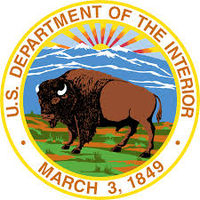
- Mission: In reference to coral reefs, the Department of the Interior aims to protect coral reefs, tropical islands, and adjacent submerged ecosystems
- Role: The DOI aims to protect and provide access to the US’s natural and cultural heritage and honor commitments to island communities
- Execution: The DOI's coral efforts are carried out by the US Fish and Wildlife Service, the Minerals Management Service, the US Geological Survey, the National Park Service, and the Office of Insular Affairs
Offices within the Department of Interior
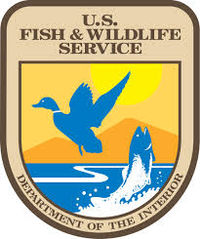
- Fish and Wildlife Service (FWS)
- Mission: The US Fish and Wildlife Service aims to dedicate efforts to conservation, protection, and enhancement of fish, wildlife and plants, and their habitats, including coral reefs
- Role: This organization is responsible for implementing and enforcing environmental laws, including the Endangered Species Act, Migratory Bird Treaty Act, Clean Water Act, Fish and Wildlife Coordination Act, and Marine Mammal Protection Act. This department's primary responsibility is to manage natural resources for the American public. The department manages natural resource management, promotes environmental education, and ensures enforcement of environmental laws.
- Accomplishments:
- Co-management with NOAA and Hawaii of the Papahanumokuakea Marine National Monument (MNM) that President Bush issued with Presidential Proclamaton 8031, which designated this 1200 mile stretch of the NW Hawaiian Islands as a Marine National Monument (MNM)
- Management of Coral Reef National Wildlife Refuges, including: Hawaiian Islands (NW Hawaiian Islands, including 7 islands), Midway Atoll, Johnston Island, Kingman Reef, Palmyra Atoll, Baker Island, Howland Island, Jarvis Island, Rose Atoll (Samoa), Guam, Key West, Great White Heron (Keys), Navassa Island, Wake Island
- An effective assessment and monitoring program of coral reefs in the Pacific
- Collaboration on international projects such as a coral reef inventory resurvey in Kosrae, an island in Micronesia, in July 2006 and field surveys in the Marshall Islands in 2002 and 2006
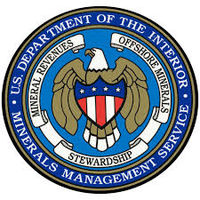
- Minerals Management Service
- Role and Mission: The general mission of the organization is to manage the ocean energy and mineral resources on the Outer Continental Shelf and Federal and Indian mineral revenues to enhance public and trust benefits, promote responsible use, and realize fair value
- Accomplishments:
- Gulf of Mexico and Caribbean Projects include research and monitoring of coral reefs in the Flower Garden Banks National Marine Sanctuary, investigation of coral growth on oil and gas structures, research on deep-sea cold water corals, and the Rigs to Reef Program, ensuring the conservation of coral reef resources on the OCS
- Offers funding opportunities for individuals seeking to engage in research

- National Park Service
- Mission: The park service aims to preserve national parks, ten parks of which contain coral reef resources in Hawaii, Guam, American Samoa, the US Virgin Islands, and Florida. These ten parks with coral reefs are: Biscayne National Park (FL), Buck Island Reef National Monument (St. Croix, USVI), Dry Tortugas National Park (FL), Salt River Bay National Historical Park and Ecological Preserve (St. Croix), Virgin Islands National Park (St John), Virgin Islands Coral Reef National Monument (St John), National Park of American Samoa, Kalaupapa National Historical Park (Hawaii) , Kaloko-Honokohau National Historical Park (Hawaii), War in the Pacific National Park (Hawaii)
- Role: The National Park Service function to preserve natural and cultural resources and the values of the national park system for the enjoyment, education, and inspiration of this and future generations
- Accomplishments:
- NPS Inventory and Monitoring Networks: assist in the acquisition and integration of scientific information and have enabled park managers to conserve ocean and coastal resources within national parks
- Acquisition of detailed coral reef habitat maps and assessment of abundance and distribution of marine species in the coral reef parks
- Research and Monitoring: Efforts of particular significance include research on threatened Elkhorn Coral in St. Croix that suffered from extensive bleaching and disease from 2005 to 2006
- State-Federal Partnerships on Marine Reserves and Ecosystem Based Research: Four research projects that examined ecosystem based approaches to recovering at-risk species, restoring fish stocks and protecting biodiversity and critical habitat on Dry Tortugas and VI park reserves
- Coral Response and Restoration Funding: In Florida's Biscayne National Park, especially, to assess and restore damaged resources such as seagrasses and corals
- State-Federal Efforts to Manage Land Use Change in Pacific Islands: have included working with state and county agencies and land developers to protect ground water quality and prevent pollution to reefs. These efforts include a successful petition to the state of Hawaii Land Use Commission imposing stricter conditions to protect water resources from non point source pollution
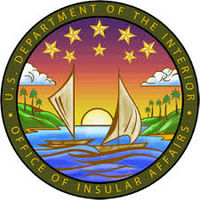
- Office of Insular Affairs
- Role and Mission: The Office of Insular Affairs is charged with coordinating federal policy and providing technical and financial assistance to the USVI, Guam, American Samoa, and the Commonwealth of the Northern Marine Islands and to the Freely Associated States of the Federated States of Micronesia, the Republic of the Marshall Islands, and the Republic of Paulu
- Accomplishments:
- US Coral Reef Initiative (USCRI):
- The US Coral Reef Initiative has been particularly successful and is designed to be a platform of US support for domestic and international coral conservation efforts. It has worked to strengthen and fill gaps in efforts to conserve and manage coral reefs and related ecosystems.
- Since 2000, OIA’s Coral Reef Initiative, in partnership with NOAA, has awarded $500,000 annually in direct grants to the insular areas for coral reef conservation and management projects. These grants support a broad range of projects designed to fill gaps in management capacity and to develop a marine management program within each of the areas. Local Action Strategies are developed by each of the US territories and form the basis for a significant portion of the insular area annual grant awards.
- Adoption of the Micronesian Challenge, initiated in 2006 by the Presidents of Palau, the Federated States of Micronesia, and the Marshall Islands, and the Governors of Guam and the CNMI. It involves the commitment to protecting at least thirty percent of near-shore marine resources and twenty percent of terrestrial resources across Micronesia by 2020. The challenge is supported by the OIA through funding as well as participation efforts on advisory and planning committees.
- US Coral Reef Initiative (USCRI):

- US Geological Survey
- Role and Mission: The Geological Survey's role is to provide reliable and unbiased scientific information to describe and understand the Earth, minimize loss of life and property from natural disasters, manage water, biological, energy, and mineral resources and enhance and protect quality of life.
- Mission: The survey's mission is to combine scientific expertise in biology, hydrology, geology, and geography and further scientific understanding of mankind’s influence on ecosystem processes and changes that are occurring that affect our well-being.
- Accomplishments:
- Most of the funding support for coral mapping, monitoring, and research comes primarily from two (of thirty) USGS programs: The Coastal and Marine Geology Program and the Terrestrial, Freshwater, and Marine Ecosystem Program
- Coral Science Plan: USGS Coral Science Plan
US Agency for International Development (USAID) [3]
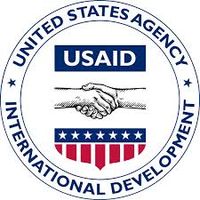
- Mission: Through public and private partnerships, the organization aims to support coral reef and mangrove forest conservation efforts in over 25 countries. Its aims include: reducing land-based sources of pollution, addressing overfishing, destructive fishing, and adverse trade impacts, promoting sustainable tourism, addressing coral bleaching and coral diseases, and promoting environmental awareness and stewardship
- Role: To help people overseas struggling to make a better life, recover from a disaster or striving to live in a free and democratic country
- Accomplishments:
- Implementation of CITES (Convention on the International Trade of Endangered Species) in the context of Executive Order 13089. Has assessed the US role in international trade and protection of coral reef species.
- Management of marine protected areas (MPAs) and sustainable fisheries of international significance such as in Indonesia, the Philippines, Egypt, Kenya, Tanzania
- Global Conservation Program partners with six US based conservation organizations to address threats to regional coral reefs internationally, including: Eastern Africa Marine Ecoregion in Kenya, Tanzania, and Mozambique; Glover’s Reef Seascape in Belize; Meso-American Reef in Mexico, Belize, Guatemala, and Honduras; Wakatobi National Park and Raja Ampat Islands in Indonesia; and Kimbe Bay in Papua New Guinea
- USAID, along with other federal agencies, helped establish the International Coral Reef Initiative (ICRI) and the ICRI’s Call to Action and Framework for Action
US Coast Guard [4]
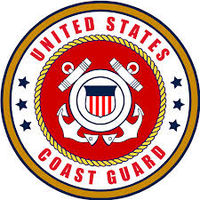
- Mission: The Coast Guard aims to ensure maritime safety, security, and stewardship
- Role: Although the Coast Guard is not mandated under Order 13089, it collaborates with other agencies to help achieve coral reef protection and conservation
- Accomplishments:
- Marine Environmental Protection Mission Statement (MEP): This mission statement protects the marine environment through prevention and response delivery responses and by developing regulations and operating standards for domestic vessels and marine facilities
- Living Marine Resources Law Enforcement Mission Statement: Mandates enforcement for conservation and management of living marine resources and their environments, including coral reefs
- Marine Environmental Response Program Statement Aims to ensure the highest quality of marine environmental response operations for oil and hazardous substance within the US and our waters
- Coral Reef Implementation Plan ensures procedures used by Coast Guard members themselves do not negatively affect coral reefs
- Enforcement Division coordinates conservation and management of living marine resources and their environment such as Fisheries and Marine Protected Species Law Enforcement; Marine Protected Area (MPA) Enforcement; Cooperative Domestic Law Enforcement Efforts
- Office of Incident Management and Preparedness aims to prevent and respond to operations addressing pollution incidents in coral reef areas and restoration, mitigation, and debris removal regulations
US Department of Agriculture (USDA)

- Mission: The USDA aims to provide leadership on food, agriculture, natural resources, and related issues. Because there is a connection between land use and coral reefs, the USDA plays a role in reef conservation [5]
- Role: Through participation in the USCRTF via the Natural Resources Conservation Service, the USDA provides assistance to individuals involved with coral reef services.
- Accomplishments:
- The Environmental Quality Incentives Program (EQIP) made available $30 million for the application of land based conservation efforts with the Pacific Islands Area. NCRS obtained 369 EQIP contracts, targeting over 63,000 acres for land-based conservation treatment. NCRS has worked with partners in Guam, Samoa, palau, and the Federated States of Micronesia to create projects that alter waste management strategies for piggeries. These dry litter waste systems and portable pen systems eliminate the use of water needed to remove waste, thus reducing risk of disease to humans and nutrient loading to coral reefs. [6]
- Florida Emergency Watershed Program helped local communities remove household and construction debris as well as vegetation waste that was deposited in the waters after Hurricanes Charley, Frances, and Jeanne occurred in 2004. The hurricanes resulted in 125,000 tons of debris, and the removal effort was successful in preventing a significant portion of this material from moving downstream and offshore onto coral reef ecosystems. [7]
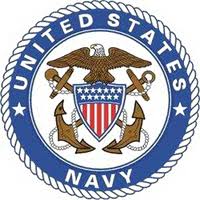
- Mission: The Navy aims to manage a variety of terrestrial, freshwater, and marine locations and all of the DOD is a member of the USCRTF. Military programs have resulted in many Dept of Defense facilities that are involved with coral reefs
- Role: The role of the Dept of Defense is to provide the military forces needed to deter war and protect the security of the US and is obligated to manage natural resources on property under its control
- Accomplishments: [3]
- Prepared Coral Reef Protection Implementation Plan to guide decision making for department wide coral reef conservation programs and includes details of priorities and funding facility-based coral reef conservation projects
- Resource Stewardship Programs help manage natural resources and include DoD Natural Resources Conservation Program and Pollution Prevention Programs that have resulted in resource management and reductions of toxic chemicals and other pollutants
- Marine Resource Protection Projects contribute to protection of coral reefs and other marine resources
- Research Programs such as Strategic Environmental Research and Development, DoD Sustainable Ranges/Readiness and Environmental Protection Initiative
Department of Defense, US Army Corps of Engineers

- Mission: The US Army Corps of Engineers aims to focus its talents and energy to sustain the environment in order to enable its worldwide missions and secure the future. It is represented in the USCRT by the regulatory branch.
- Role: The US Army Corps of Engineers provides design and engineering services, and construction support for a variety of military projects worldwide.
- Accomplishments:
- Member of Permanent International Association of the Navigation Congress (PIANC) and has engaged in research and efforts to address the impacts of dredging and port construction on shallow, warm-water reefs [8]
- Member of Pacific Region Interagency Working Group (PRIWG) for Coral Reef Mitigation and includes the development, in 2006, of a Coordination and Management Plan to develop consistent measures for evaluating and implementing mitigation programs addressing impacts to coral reefs resulting from any federal action. [9]
Department of State
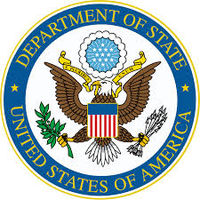
- Mission: The mission of the Department of State is to create a more secure, democratic, and prosperous world for the benefit of the American people and the international community
- Role: The Department of State is represented on the US Coral Reef Task Force by the Bureau of Oceans and International Environmental and Scientific Affairs
- Accomplishments: [3]The Department of State represents the US in treaties, international agreements, and conventions. The DOS has played a significant role in agreements that are most relevant to coral reef conservation, including:
- South Pacific Regional Environment Program (SPREP) Agreement exists to protect and improve the South Pacific environment and to ensure sustainable development in that area. American Samoa, Guam, and the Commonwealth of the Northern Marina Islands are located within the SPREP area
- Membership in Convention on International Trade in Endangered Species (CITES)
- Convention on Biological Diversity
- UN Framework Convention on Climate Change
- Execution of Executive Order 13089
Environmental Protection Agency (EPA)
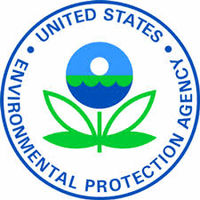
- Mission: The Environmental Protection Agency's mission is to protect human health and the environment
- Role: As the nation's leading federal agency responsible for protecting the quality of the United States' drinking and surface waters, the EPA serves to ensure that all waters, including coral reefs, are successfully managed, protected, and restored to sustain healthy biological communities and to sustain human health
- Accomplishments: [3]
- Memorandum concerning Coral Reef Protection and Conservation Emphasis. This memorandum re-emphasized the obligation to coral reef protection under the the Clean Water Act; Marine Protection, Research, and Sanctuaries Act; Rivers and Harbors Act; and Federal Projects carried out by the Corps
- Offices within EPA that address coral reef protection: Office of Research and Development, Office of Environmental Information, and three EPA Regional Offices that work with jurisdictions represented in the USCRTF (Region 2: Puerto Rico and US Virgin Islands; Region 4: Florida; Region 9: Hawaii, Guam, American Samoa, commonwealth for Northern Marina Islands)
- Environmental Monitoring and Assessment Program (EMAP), including the development of tools to monitor and assess the status and trends of national ecological resources (of significance here are coral reef resources)
- Marine Debris Prevention Program
- Bioassessment Procedures
- Ecological Research Program (ERP) involves research to provide decision support tools for protection, enhancement, restoration, and sustainability of coral reef ecosystems and coral reef ecosystem services
- Water Quality Protection Program for the Florida Keys National Marine Sanctuary
- Southeast Florida Coral Reef Initiative/Land-Based Sources of Pollution Focus Team
- USVI Point Source Discharge Regulations
- USVI Monitoring Programs and Indicators
- Bioassessment Tools for Stony Corals
- USVI Environmental Stewardship Initiative
- EPA CARE grant
- Hanalei Watershed Hui
- Kauai Stormwater Settlement Agreement
- Large-capacity Cesspool Closures
- Guam Wastewater Spill Reduction
- Publications:
- Charting a Course Toward Diagnostic Monitoring: A Continuing Review of Coral Reef Attributes and a Research Strategy for Creating Coral Reef Indexes of Biotic Integrity
- Development of Biological Criteria for Coral Reef Ecosystem Assessment
- Stony Coral Rapid Bioassessment Protocol
National Space and Aeronautic Administration (NASA)
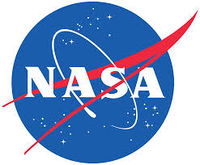
- Mission: NASA's mission is to pioneer the future in space exploration, scientific discovery and aeronautics research.
- Role: NASA plays a role in the US Coral Reef Task Force by the Ocean Biology and Biogeochemistry research program and engages in mainly research efforts as a partner in the task force
- Accomplishments: [3]NASA has funded several coral reef research projects, including:
- Landsat 7 Coral Reef Images
- Millennium Coral Reef Mapping Project
- Airborne Remote Sensing of Coral Reefs for Ecosystems Research
- Mapping of 2005 Bleaching Event in the Gulf of Mexico and the Caribbean
- NASA Interdisciplinary Study Coral Reef Assessment: An international research assessment of coral reefs
National Science Foundation (NSF)
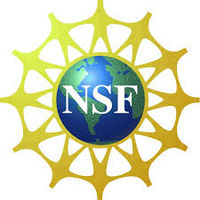
- Role: As a partner in the US Coral Reef Task Force, the National Science Foundation collaborates with federally-funded environmental research concerning coral reefs, including that on: corals themselves, coral reefs today and in the past, coral reef ecosystems, and the infrastructure used to study reef systems and environments. These efforts include: laboratory studies, field-experimentation and observation worldwide, interdisciplinary studies coupling biology and ecology to ocean physical and chemical processes, and climate, and simulation and predictive modeling of the dynamics of coral reef systems.
- Mission: The National Science Foundation's mission to promote the progress of science and to advance national health, prosperity, and welfare [10]
- Accomplishments:
- Long-term Ecological Research at U.C. Berkeley’s Gump Research: which provides significant opportunities for researchers to study population dynamics of coral reefs and qualitative responses of coral reefs to different types of environmental change [11]
- Research studying times-series studies of coral reef structures and reef-associated community composition in the eastern Pacific in response to El Nino-Southern Oscillation climate disturbances [12]
- Programs to address scientific and technical needs of the US-Affiliated Pacific Islands [12]
International Units Working with Coral Reefs
International Coral Reef Initiative (ICRI)
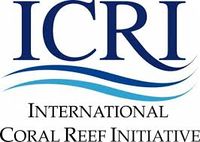
- Mission: The International Coral Reef Initiative aims to encourage the adoption of best practice in sustainable management of coral reefs and associated ecosystems, build capacity, and raise awareness at all levels on the plight of coral reefs around the world. [13]
- Role: The ICRI operates through its networks and committees who organize regional meetings and workshops on specific topics. ICRI State Members may choose to implement ICRI’s objectives through National Coral Reef Initiatives.
- Accomplishments: [13]
- Call to Action and Framework for Action documents provided guidance for providing the basis for regional workshops that defined regional needs and priorities, and catalyzed the deveopment of national coral reef initiatives, gave visibility to the ICRI's goal of ecosystem and community-based management, and encouraged U.N. agencies and convention bodies, as well as multilateral and bilateral donors to incorporate ICRI into their programs
- Global Coral Reef Monitoring Network
International Coral Reef Initiative: Crime Scene Investigation Program
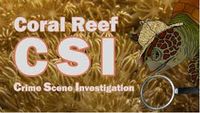
- Mission: The program's mission is to train natural resource managers and enforcement officers in underwater forensics and evidence collection [14]
- Role: The program was tasked with developing a standardized protocol to help marine park managers investigate and collect evidence from a wide range of human impacts on coral reefs [14]
- Accomplishments: [14]
- Training Programs to standardize coral reef enforcement in investigations
- Regional Training Workshops for coral reef resource managers and enforcement personnel
Coral Reef Triangle Initiative

- Mission: The Coral Reef Triangle Initiative on Coral Reefs, Fisheries, and Food Security to address the urgent threats facing the coastal and marine resources of one of the most biologically diverse and ecologically rich regions on earth [15]
- Role: To execute its mission, the Coral Reef Triangle Initiative partners with six countries--Indonesia, Malaysia, Papau New Guinea, the Philippines, Solomon Islands, and Timor-Leste
- Accomplishments: [15]
- Adoption of a ten year Regional Plan of Action
- Region Wide Early Action Plan for Climate Change Adaptation (REAP)
United Nations Regional Seas Program

- Mission: The Regional Seas Program aims to address the accelerating degradation of the world’s oceans and coastal areas through the sustainable management and use of the marine and coastal environment, by engaging neighboring countries to protect their shared marine environment [16]
- Role: This program partners with the International Coral Reef Initiative and is coordinated by the United Nations Environmental Protection Program
- Accomplishments: The program provides a support framework for national and regional actions to bring pressures on coral reefs and related ecosystems to a sustainable level, thereby providing a mechanism for implementing the ICRI Continuing Call to Action and Framework for Action through the Regional Seas [16]
References
- ↑ 1.0 1.1 1.2 "About the US Coral Reef Task Force." United States Coral Reef Task Force. National Oceanic and Atmospheric Administration, 10 May 2010. Web. 20 Feb. 2015.
- ↑ 2.0 2.1 2.2 "NOAA's Coral Reef Conservation Program." National Oceanic and Atmospheric Administration. 15 June 2011. Web. 20 Feb. 2015.
- ↑ 3.0 3.1 3.2 3.3 3.4 3.5 "United States Coral Reef Task Force Federal Member Coral Profiles." US Coral Reef Task Force. National Oceanic and Atmospheric Administration, 1 May 2009. Web. 20 Feb. 2015.
- ↑ "Discover Our Roles and Missions: Marine Environmental Protection." United States Coast Guard. United States Coast Guard, 1 Jan. 2015. Web. 20 Feb. 2015.
- ↑ "Mission Statement." USDA. United States Department of Agriculture, 15 Apr. 2014. Web. 20 Feb. 2015.
- ↑ Fukumoto, Glen. "Dry Litter Systems for Small-Scale Piggery Operations." College of Tropical Agriculture and Human Resources. Hanai-Ai: The Food Provider, 1 June 2010. Web. 20 Feb. 2015.
- ↑ Wilson, Jesse. "Emergency Watershed Protection Program." Natural Resources Conservation Service Florida. United States Department of Agriculture, 1 Jan. 2010. Web. 20 Feb. 2015.
- ↑ "PIANC Dredging and Port Construction Around Coral Reefs." United Nations Environment Programme World Conservation Monitoring Centre. PIANC, 1 Jan. 2010. Web. 20 Feb. 2015.
- ↑ "Coordination and Management Plan for the Pacific Region Interagency Coral Reef Mitigation Working Group (PRWIG)." USCRTF. US Coral Reef Task Force, 1 Apr. 2006. Web. 20 Feb. 2015.
- ↑ "About the National Science Foundation." National Science Foundation. NSF. Web. 20 Feb. 2015.
- ↑ Roderick, George. "Richard B Gump South Pacific Research." Berkeley Research: University of California. UC Berkeley, 1 Jan. 2007. Web. 20 Feb. 2015.
- ↑ 12.0 12.1 Kleypas, Joan. "Impacts of Ocean Acidification on Coral Reefs and Other Marine Calcifiers: A Guide for Future Research." University Corporation for Atmospheric Research (UCAR). UCAR, 1 June 2006. Web. 20 Feb. 2015.
- ↑ 13.0 13.1 "Brief History: International Coral Reef Initiative." International Coral Reef Initiative. ICRI. Web. 20 Feb. 2015.
- ↑ 14.0 14.1 14.2 "Coral Reef Crime Scene Investigation." International Coral Reef Initiative. ICRI Forum. Web. 20 Feb. 2015.
- ↑ 15.0 15.1 "About Coral Triangle Initiative on Coral Reefs, Fisheries, and Food Security (CTI-CFF)." Coral Triangle Inititiave. CTI-CFF. Web. 20 Feb. 2015.
- ↑ 16.0 16.1 "Regional Seas Programme." United Nations Environment Programme. UNEP, 1 Jan. 2009. Web. 20 Feb. 2015.